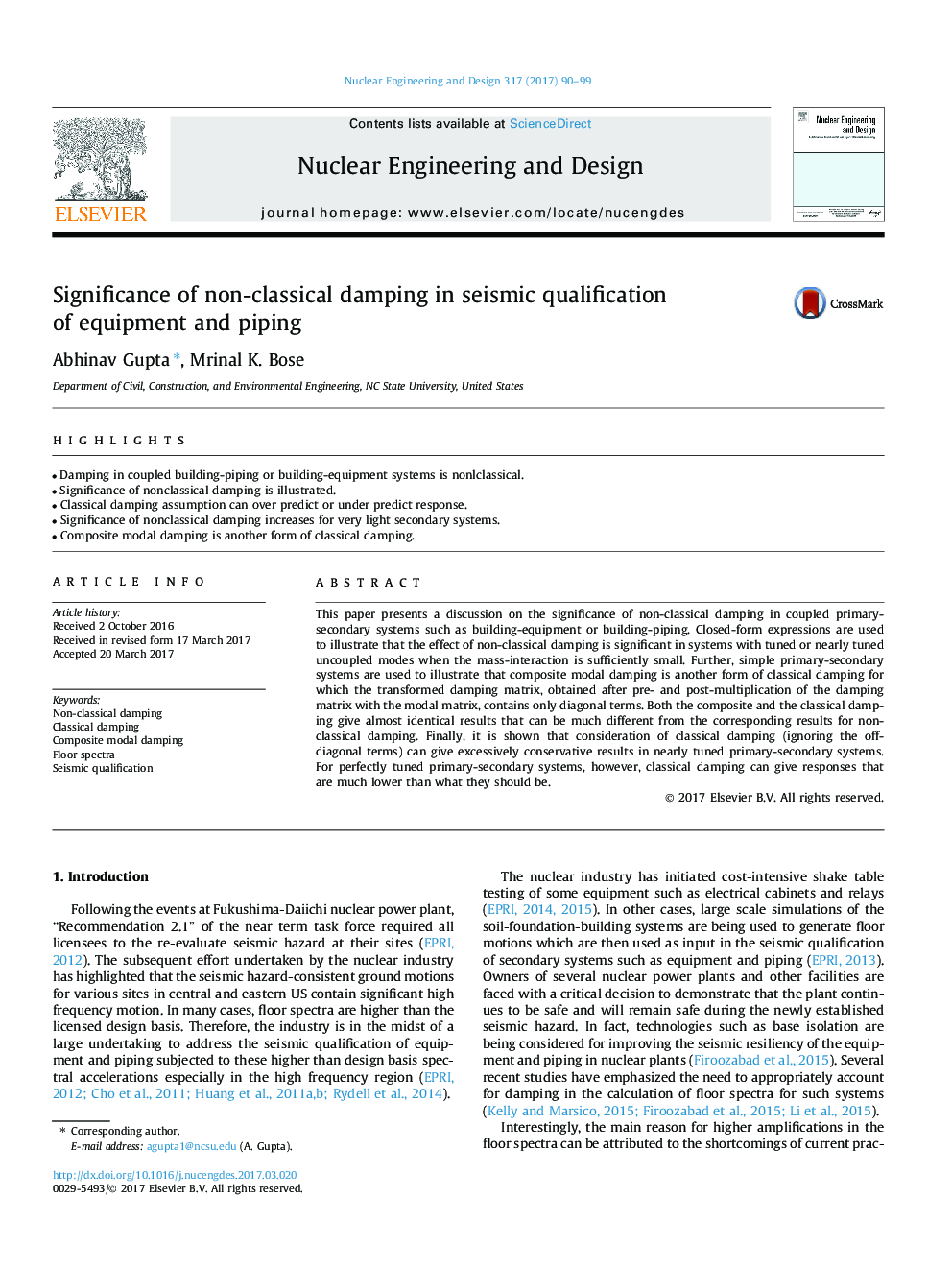| Article ID | Journal | Published Year | Pages | File Type |
|---|---|---|---|---|
| 4925589 | Nuclear Engineering and Design | 2017 | 10 Pages |
Abstract
This paper presents a discussion on the significance of non-classical damping in coupled primary-secondary systems such as building-equipment or building-piping. Closed-form expressions are used to illustrate that the effect of non-classical damping is significant in systems with tuned or nearly tuned uncoupled modes when the mass-interaction is sufficiently small. Further, simple primary-secondary systems are used to illustrate that composite modal damping is another form of classical damping for which the transformed damping matrix, obtained after pre- and post-multiplication of the damping matrix with the modal matrix, contains only diagonal terms. Both the composite and the classical damping give almost identical results that can be much different from the corresponding results for non-classical damping. Finally, it is shown that consideration of classical damping (ignoring the off-diagonal terms) can give excessively conservative results in nearly tuned primary-secondary systems. For perfectly tuned primary-secondary systems, however, classical damping can give responses that are much lower than what they should be.
Keywords
Related Topics
Physical Sciences and Engineering
Energy
Energy Engineering and Power Technology
Authors
Abhinav Gupta, Mrinal K. Bose,
